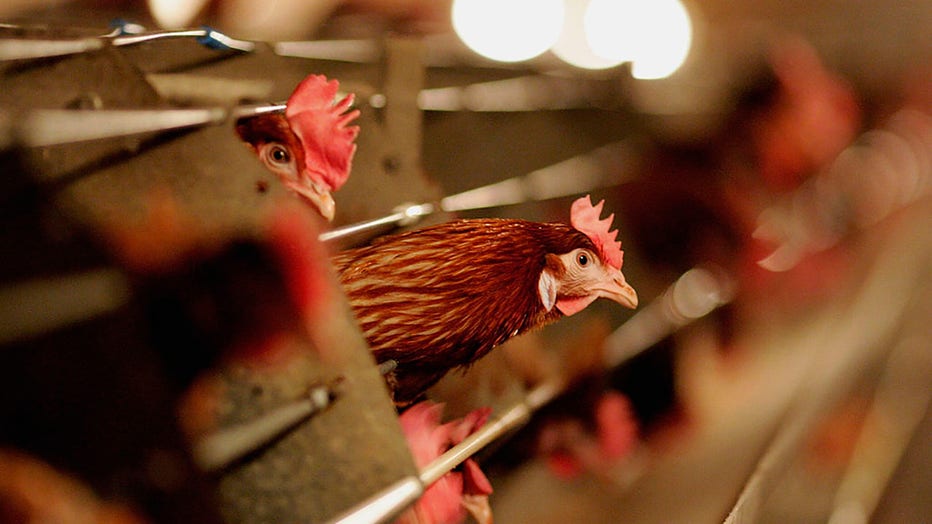WHO confirms 1st human death of bird flu strain H5N2
MEXICO CITY - The first confirmed human case of a strain of bird flu called H5N2 has died, the World Health Organization said on Wednesday.
The 59-year-old man lived in Mexico. The WHO said it wasn’t clear how he became infected, although H5N2 has been reported in poultry in the country.
Before this case, H5N2 had never before been found in a human, officials said.
Here’s what to know:
What is bird flu?

FILE - Battery hens sit in a chicken shed on Feb. 6, 2007, in Suffolk, England. (Photo by Jamie McDonald/Getty Images)
There are several types of bird flu.
H5N2 is not the same strain that has infected multiple dairy cow herds in the U.S. That strain is called H5N1 and three farmworkers have gotten mild infections.
Other bird flu varieties have killed people across the world in previous years, including 18 people in China during an outbreak of H5N6 in 2021, according to a timeline of bird flu outbreaks from the U.S. Centers for Disease Control and Prevention.
1st human death from bird flu strain H5N2
Mexican health officials alerted the WHO that a man who died in a Mexico City hospital had the virus despite no known exposure to poultry or other animals.
According to family members, the patient had been bedridden for unrelated reasons before developing a fever, shortness of breath and diarrhea on April 17, according to the WHO release.
Mexico's public health department said in a statement that he had underlying ailments, including chronic kidney failure, diabetes and high blood pressure.
Hospital care was sought on April 24 and the man died the same day.
Initial tests showed an unidentified type of flu that subsequent weeks of lab testing confirmed was H5N2.
The WHO said the risk to people in Mexico is low, and that no further human cases have been discovered so far despite testing people who came in contact with the deceased at home and in the hospital.
There had been three poultry outbreaks of H5N2 in nearby parts of Mexico in March but authorities haven’t been able to find a connection.
Mexican officials also are monitoring birds near a shallow lake on the outskirts of Mexico City.
Whenever bird flu circulates in poultry, there is a risk that people in close contact with flocks can become infected. Health authorities are closely watching for any signs that the viruses are evolving to spread easily from person to person, and experts are concerned as more mammal species contract bird flu viruses.
Bird flu symptoms in humans
Although bird flu viruses usually do not infect people, there have been some rare cases of human infection, the CDC says on its website.These cases have ranged in severity from no symptoms or mild illness to severe disease that resulted in death, the agency notes.
Symptoms of bird flu virus in humans can include no symptoms or mild illness, such as eye redness, or mild flu-like upper respiratory symptoms. But symptoms can also be severe, including pneumonia requiring hospitalization, fever, cough, sore throat, runny nose, muscle or body aches, headaches, fatigue, and shortness of breath or difficulty breathing, the CDC says.
Less common signs and symptoms include diarrhea, nausea, vomiting, or seizures.
The Associated Press contributed to this report.

